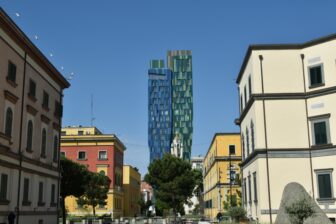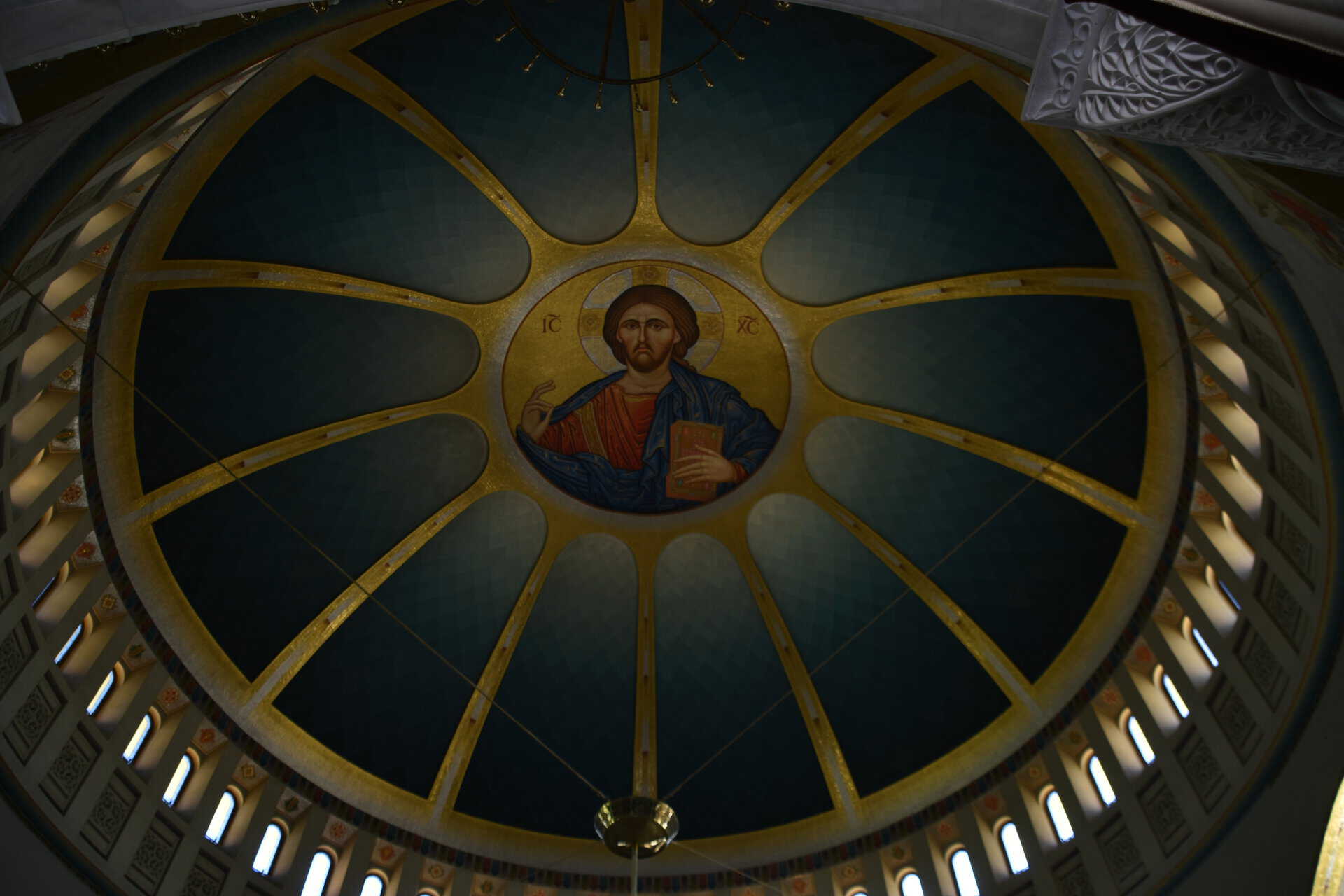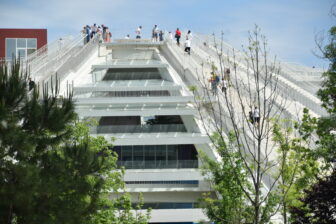
[Apr. 2024] We arrived at Berat, our destination for the day on the Albania tour.
The town is a World Heritage Site because it retains the streetscape from the Ottoman Turkish era.
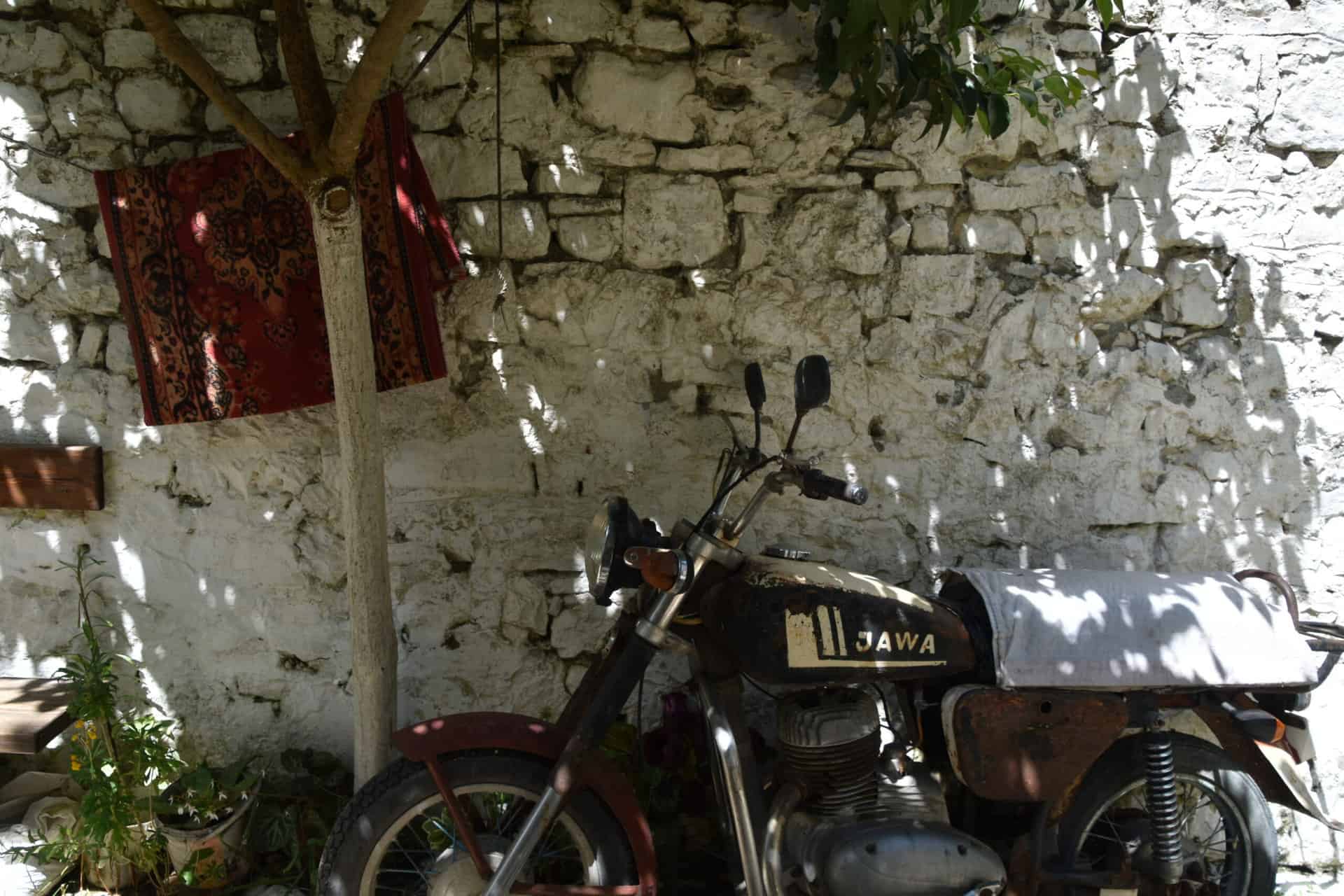
There is a castle ruin on the hill, and old houses are lined up around it.
In addition to that, traditional houses are lined up at the foot of the hill, too.
The upper part is called Kalaja, and the lower part is called Mangalem.
Since this is a tour, we started sightseeing in the Kalaja area as soon as we arrived.
After walking a little way up the sloped street that seems to have remained unchanged since the Ottoman era, the first place we went to was the Onufri Museum.
The highlight of this place is the precious icons from the 16th century.
The building was originally a church, and the iconostasis and other items remain.
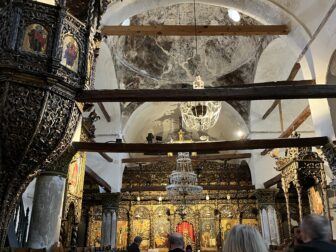
It is said that there used to be 40 churches in Berat, but only 12 remain today, and this museum is one of them.
According to our guide, Giorgio (as he was called on this Italian tour, but probably György in the Albanian style), the iconostasis paintings were done by monks, so they are crude in terms of art, but they are in line with tradition and are highly valuable.
He explained that in the old days, like Islam and Judaism, women in the Orthodox Church prayed in a separate room (on the balcony above), but later married women began to sit on the right side and men on the left side.
Unmarried women still sat in the balcony.
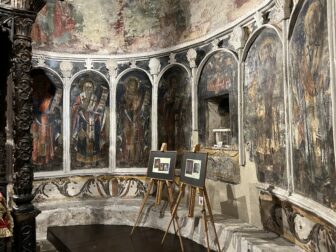
Clergy can be married, but if they are married, they will not be promoted well.
They said that marriage must be done before taking the priesthood, and is not allowed afterwards.
The icons lined up in the museum are characterised by the vermilion colour seen here and there.
This is the unfading vermilion colour invented by an icon painter named Onufri.
However, he was apparently a very mean man, and did not even teach his own son how to make the vermilion, so the truth remains a mystery to this day.
Giorgio also pointed out that paintings of Mary and Christ have become more human over the years.
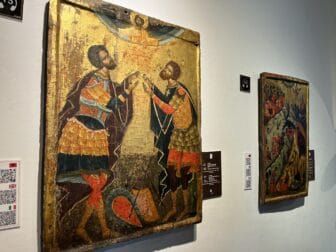
In the early days, the paintings were flat and diagram-like, but gradually, it was clear to see that Mary’s facial expression was being added.
After leaving the museum, we visited another church, the Church of Mary Bleherna.
It was a small church with traces of the interior being covered in frescoes.
Orthodox churches often have covered entirely in frescoes.
It reminded me of churches we saw in North Macedonia, not far from Albania, and even in Georgia.
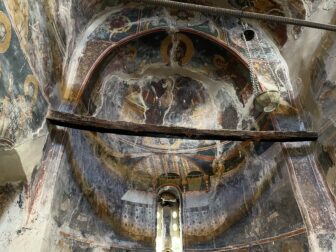
According to the information board, this church is the oldest in Berat and originally had a monastery attached to it.
The current structure is the result of rebuilding in the 16th century.

